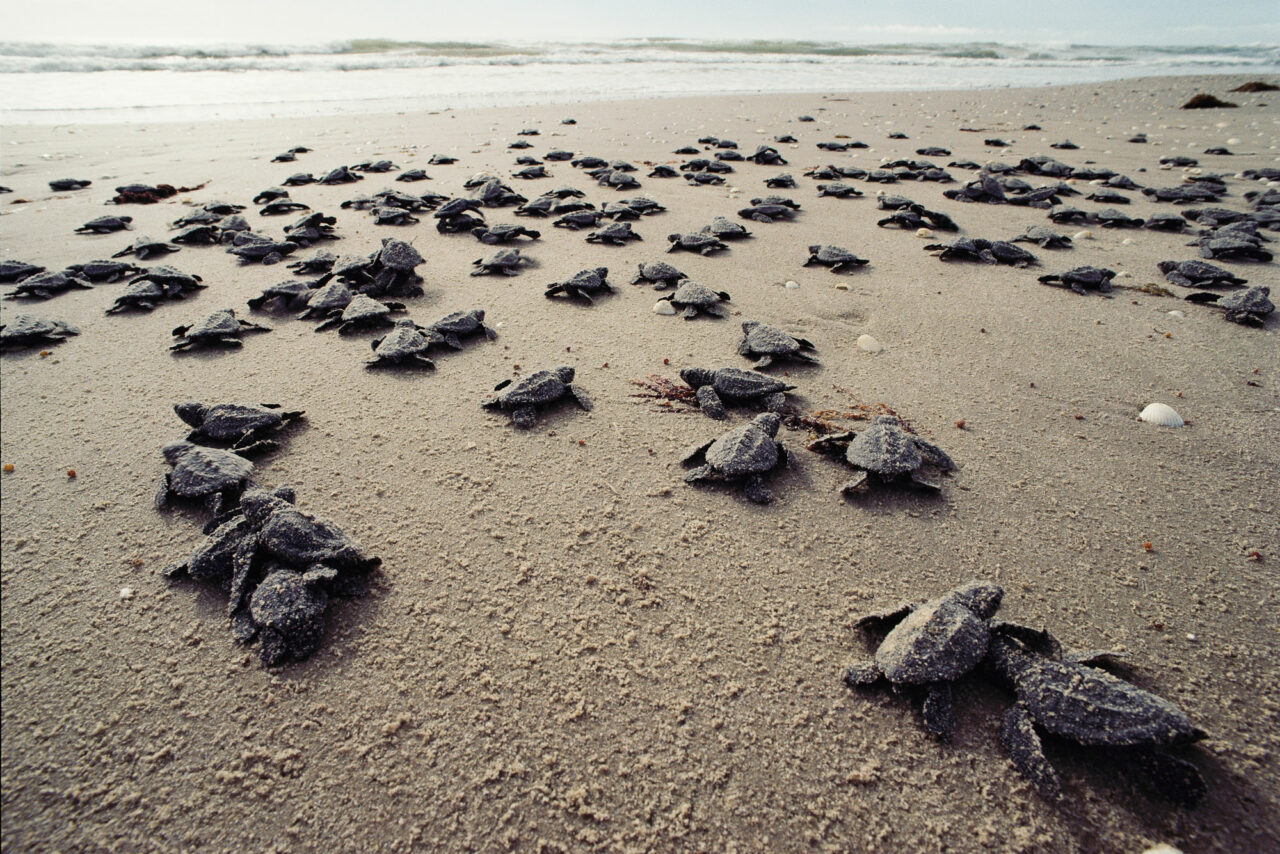
Officially, sea turtle nesting season in Florida runs until Oct. 31. But Florida Fish and Wildlife Conservation Commission (FWC) officials are asking for volunteers to pitch in this Labor Day Weekend to help protect the sea creatures still laying eggs on the state’s coastlines.
The extended holiday weekend will draw many residents and visitors to the shoreline in one last blast at the end of Summer. FWC officials point out some simple reminders that can make heroes out of everyday people as they are enjoying the beach, protecting both sea turtles and shorebirds.
“You can help nesting sea turtles and their emerging hatchlings, along with shorebirds and flightless chicks, by giving them space, removing beach gear at night, keeping beaches clean and dark, and filling in holes dug in the sand before you leave,” said an FWC news release advising awareness over the Labor Day Weekend.
The state environmental agency acknowledged that many residents and tourists may assume nesting season is drawing to a close. But there can still be a lot of damage done to the wildlife if beachgoers disregard awareness.
“Some sea turtle hatchlings are still emerging from nests on many beaches around the state, trying to make their way to the ocean. Any interference, including artificial lights and getting too close, can cause hatchlings to be confused and lose their way, endangering their chances at survival,” the FWC advisory said.
FWC is urging anyone going to the coastline or living at the beach during the Labor Day Holiday stretch to consider the following:
— Close curtains after dark to help ensure nesting turtles are not disturbed by interior lights as they come ashore and hatchlings are not disoriented as they emerge from their nests. Make sure any required exterior lighting adjacent to nesting beaches is long, low and shielded. Avoid using any color flashlight or cellphone lights, and don’t take flash photos after dark on the beach.
— Clear the way at the end of the day to help nesting sea turtles, emerging hatchlings and shorebirds. Obstacles on the beach and holes in the sand can trap or prevent sea turtle hatchlings from reaching the water and stop adult sea turtles from being able to nest, so it is important to remove all beach toys and furniture before leaving.
— If you or your family digs a hole on the beach, keep it closer to the water line to avoid active sea turtle nests and make sure you fill it back in before leaving to avoid trapping sea turtles and hatchlings, as well as flightless shorebird chicks. Trash and food scraps attract predators that can prey on sea turtle hatchlings and flightless shorebirds, so it is important to properly dispose of these items after a day at the beach.
— Give sea turtles, emerging hatchlings and shorebirds space. Getting too close to sea turtle hatchlings or nesting sea turtles can prevent them from getting to where they need to go. If an animal changes its behavior when you approach, that is a sign you may be too close.
— While not a common occurrence, be on the lookout for disoriented sea turtles or young, flightless shorebirds in unexpected places, such as coastal sidewalks or roadways. Drive slowly along coastal routes to help keep both wildlife and human pedestrians safe.
— If you find a sea turtle hatchling or adult sea turtle in distress, immediately call the FWC’s Wildlife Alert Hotline at 888-404-FWCC (3922).



